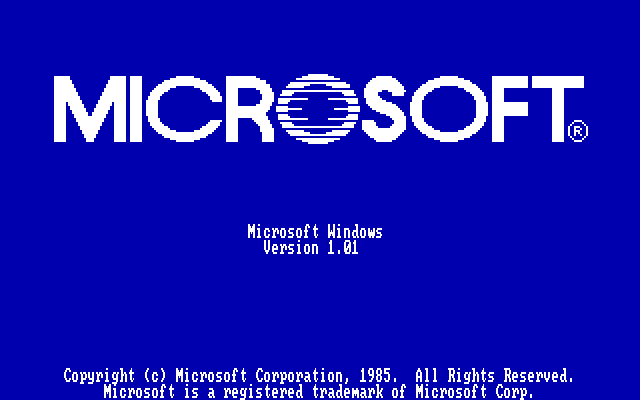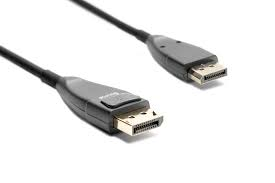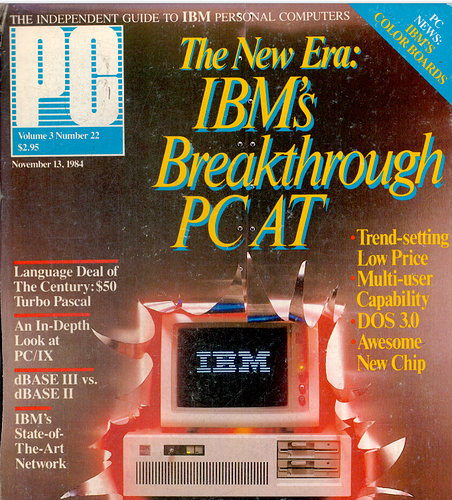Finally it sounds like we’re discussing vaping!
![]()
I’m sorry @Dan_the_Man had to cut the grass real quick. YES, if you are looking for FIRE IT UP, then, let’s hook EVERYTHING UP.
CPU seated correctly, with SMALL dab of heat compound, no bigger than a pea sized drop, insert CPU cooler. Insert, rock, and lock RAM, plug in all hard drives, plug in other addons. Plug in ALL fans, case, cpu, gpu, etc.
The moment of truth commences. Woohoo!
drum roll…


Installation instructions
Installation notes:
The installer expects you to run it from the A: drive. Either write the images to disks or SUBST from a hard drive folder.
Windows 1.x will run on DOS 5 and later as long as SETVER is loaded and there is a SETVER entry for “WIN100.BIN” to report “3.34”. Otherwise it will crash at startup.
COMMAND.COM will only run in a window in DOS 3.3 and earlier.
1.x does not support PS/2 mice. However if you overwrite MOUSE.DRV with the Windows 2.03 version, and install Windows with the serial mouse option, then they will work.

I remember my joy (in 1975) when using one the first (static) RAMs (4 bits x 16). It was not cheap ! 
https://spectrum.ieee.org/geek-life/hands-on/build-your-own-altair-8800-personal-computer
Inherited a Commodore 64, and remember entering-in code that would evaporate upon powering-off.
HAHA!!! Finally!!
Ok, so, it is finished. I think. All I have to do now is figure out how to tell if each thing works.
Mainly, for now, I have a question. Where should I plug my webcam? The graphics card or MB?
My graphics card has a USB so that is why I am asking. I figured a camera has graphics right? So, wouldn’t it have bad ass graphics if I plug it
Never seen USB on a graphics card.
There’s been VGA, DVI, Display port, and HDMI…but never been a reason to have a USB slot on a graphics card to my knowledge.
What gpu do you have?
(brand and model)
If it have a usb connection, just plug it to one of your mb usb port. It’s probably one of those plug n play hardware.
huh? Never heard of such witchery…then again I haven’t bought a graphics card in decades so who knows.
Display connectivity on the XFX RX 570 RS 8GB XXX Edition consists of:
- Single DL-DVI-D port
- Single HDMI 2.0b port
- Trio of HDR-ready DisplayPort 1.4 ports that support up to four displays.
@Dan_the_Man, I’m with @delltrapp WebCam to the MB USB.
Here is a picture of the ports on a Radeon RX 570:

Image: https://images.techhive.com/images/article/2017/04/aorus-2-100718228-large.jpg
Source: AMD Radeon RX 570 review: The best graphics card you can buy under $200, barely changed | PCWorld
The connector shown on the upper-left in the above image is HDMI 2.0 (as opposed to being USB).
yes, but the three next to it are usb. Does it matter where it is located?
Ok so maybe they aren’t USB. So what are HDR-ready display port 1.4 used for?
If (as I might assume) you are referring to ports existing on the (inserted) video card itself:
(If) you are referring to some USB port(s) (instead) associated with the system board, then no.

I am obviously quite green
Get and read all of the documentation relating to the boot-time “BIOS” settings before messing around. Only change settings if you understand what the results of any changes mean. Diagnostics? Windoze?
Look on the bright side. If you “brick” your “SSD - 500GB Sata III”, you can get a Class 40 NVMe SSD.
Class 20 drives denoted mainstream SATA SSDs. These are the typical SSDs found in many client platforms and are suitable for workstation customers who want quiet, fast, and reliable drives but don’t necessarily need the highest performance.
Class 30 drives represent the highest performing SATA SSDs. Initially when we introduced the classification system, there were quite many models of Class 30 SSD, but due to a number of factors including manufacturing costs and increasing performance of TLC-based drives, there are very few Class 30 drives today. Workstation users desiring higher performance than Class 20 should look to NVMe devices.
Class 40 drives are predominantly mainstream NVMe devices that incorporate TLC flash. There are a significant number of different models available in Class 40, which tends to lead to performance variation as newer generations replace older generations.
Class 50 drives are the highest performing SSDs offered on Precision workstations. They provide some significant performance gains over Class 40. Many are based on MLC flash, while some incorporate newer, faster technologies such as 3D Xpoint.
We’re trying to walk him through the difference between a USB port and a DisplayPort connector, and you wanna lead him off into NVMe land??
C’mon man.
I thought he was joking earlier about the USB port… Clearly (now) he was not.
Let’s keep this on target, and as BASIC as possible please.


